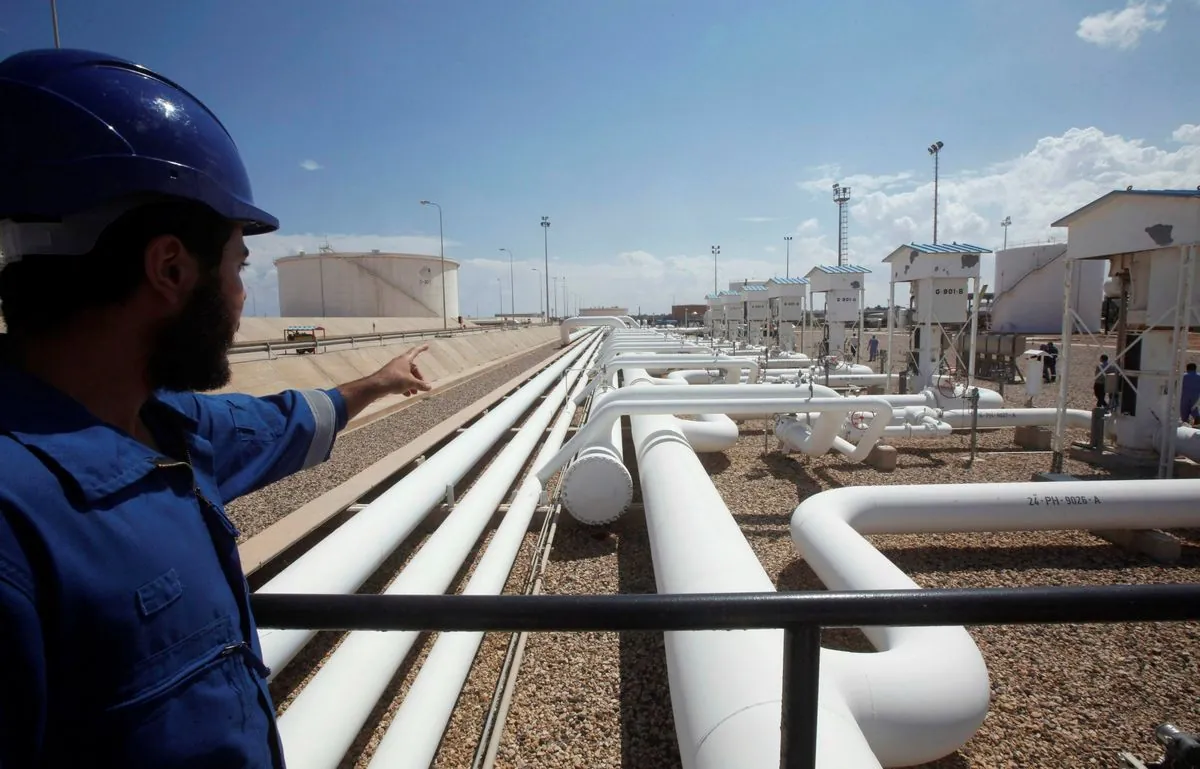Libya's Oil Production Halts Amid Political Tensions and Revenue Disputes
Several Libyan oilfields cease operations due to conflicts over central bank control and oil revenue. The situation impacts global oil prices and highlights ongoing political instability in the country.

Libya's oil industry faces a significant setback as multiple oilfields across the country halt production, stemming from a dispute over control of the central bank and oil revenue distribution. This development underscores the ongoing political instability in the North African nation, which possesses the largest proven oil reserves on the continent.
Engineers from various oilfields, including Amal, Nafoora, and El Feel, have reported production stoppages or reductions. The El Feel oilfield, operated jointly by the National Oil Corporation (NOC) and Eni SpA, has a capacity of 70,000 barrels per day. This situation highlights the challenges faced by international oil companies operating in Libya since 1959.
The conflict primarily involves authorities in eastern Libya, where most oilfields are located, and the internationally recognized government in Tripoli. Khalifa Haftar, the eastern Libyan military leader controlling most oilfields, stated that the central bank should not be interfered with, rejecting actions by entities he deems illegitimate. Conversely, Tripoli-based Prime Minister Abdulhamid al-Dbeibah argued against shutting down oilfields under "flimsy pretexts."
Libya's oil sector, which accounts for approximately 95% of the country's export earnings, has faced numerous challenges since the civil war began in 2011. The current crisis further exacerbates the situation, potentially impacting global oil markets. Brent crude prices have shown sensitivity to the Libyan shutdowns, rebounding over 7% in recent trading sessions.
The NOC, established in 1970 when Libya nationalized its oil industry, has declared force majeure at the Sharara oilfield, one of the country's largest with a capacity of 300,000 barrels per day. This field, discovered in 1980, exemplifies the rich oil resources that once allowed Libya to produce up to 3 million barrels per day in the 1970s.

As of July 2024, Libya's overall oil production stood at approximately 1.18 million barrels per day, according to OPEC sources. This figure represents a significant decline from historical peaks and illustrates the ongoing challenges faced by the country's oil sector.
The current crisis also involves a dispute over the leadership of Libya's central bank. The Presidency Council head in Tripoli, Mohammed al-Menfi, issued a decision to replace the bank's chief and board, a move rejected by the parliament in the west. This conflict over financial control further complicates the already tense political landscape.
Libya's oil industry, which has been subject to frequent disruptions due to protests and armed conflicts, continues to play a crucial role in the global oil market. The country's light sweet crude oil is highly valued internationally, and any significant disruption in its production can have far-reaching effects on oil prices worldwide.
As the situation unfolds, the international community watches closely, recognizing the importance of Libya's oil sector not only for the country's economy but also for global energy markets. The resolution of this crisis will be crucial for the stability of Libya's oil industry and its future economic prospects.


































